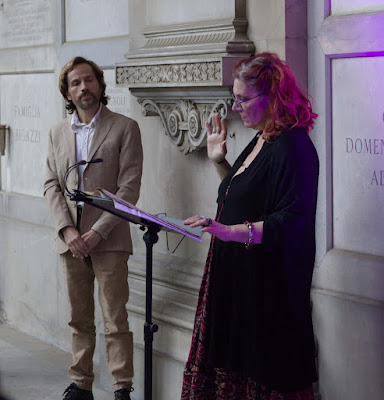
Conference dates and venue
The next ASCE’s annual Conference will be held earlier than usual, this time from 18 to 19 June 2026 in Turin, Italy.
The conference will take place in Turin’s historic centre, close to the city’s Monumental Cemetery. Exact venues will be announced soon.
Programme overview
The conference begins with the Association of Significant Cemeteries of Europe Annual General Meeting on 18 June at 10.30, followed by lunch. The conference academic programme runs across three sessions:
- Thursday 18 June, afternoon (indoor venue)
- Friday 19 June, morning (at the Monumental Cemetery)
- Friday 19 June, afternoon (indoor venue)
Conference theme: "Life Lessons: Cemeteries as Educational Heritage"
Cemeteries engage all the senses and offer rich opportunities for learning. From sculptural and architectural heritage to the textures of weathered stone, the presence of vegetation and wildlife, and the stories embedded in family histories, these sites possess profound educational potential.
This learning, understanding and recognising the values of the past to shape our future, forms a foundation of our humanity. Yet in contemporary society, the lessons cemeteries offer risk being overlooked or dismissed as irrelevant.
This year’s conference explores how cemeteries can function as vital heritage sites for education, inviting reflection on how we preserve, interpret, and transmit knowledge across generations.
Topics
We welcome papers addressing (but not limited to):
- educational programmes in cemetery settings,
- cemeteries in formal and informal education,
- heritage interpretation and visitor engagement,
- digital technologies and heritage learning,
- training and professional development for cemetery staff and volunteers,
- community participation and knowledge exchange,
- schools and universities working with cemetery heritage.
Submissions
Individual presentations (15-20 minutes) and panel discussions (30-45 minutes, maximum four participants) are welcome.
Please submit via the form below:
- An abstract of no more than 250 words
- A brief CV (maximum one page)
- For panel proposals, names and affiliations of all participants
Deadline for submissions: 31 January 2026
Notification of acceptance: 28 February 2026
Editorial board
- Andreea Pop, phd
- Esterino Adami, phd
- Ian Dungavell, phd
- Ioanna Paraskevopoulou, phd
- Renata Santoro, phd
- Silvia Beltramo, phd
Further information
For any questions, please contact Mrs. Renata Santoro at renata.santoro@cimiteritorino.it.



















































